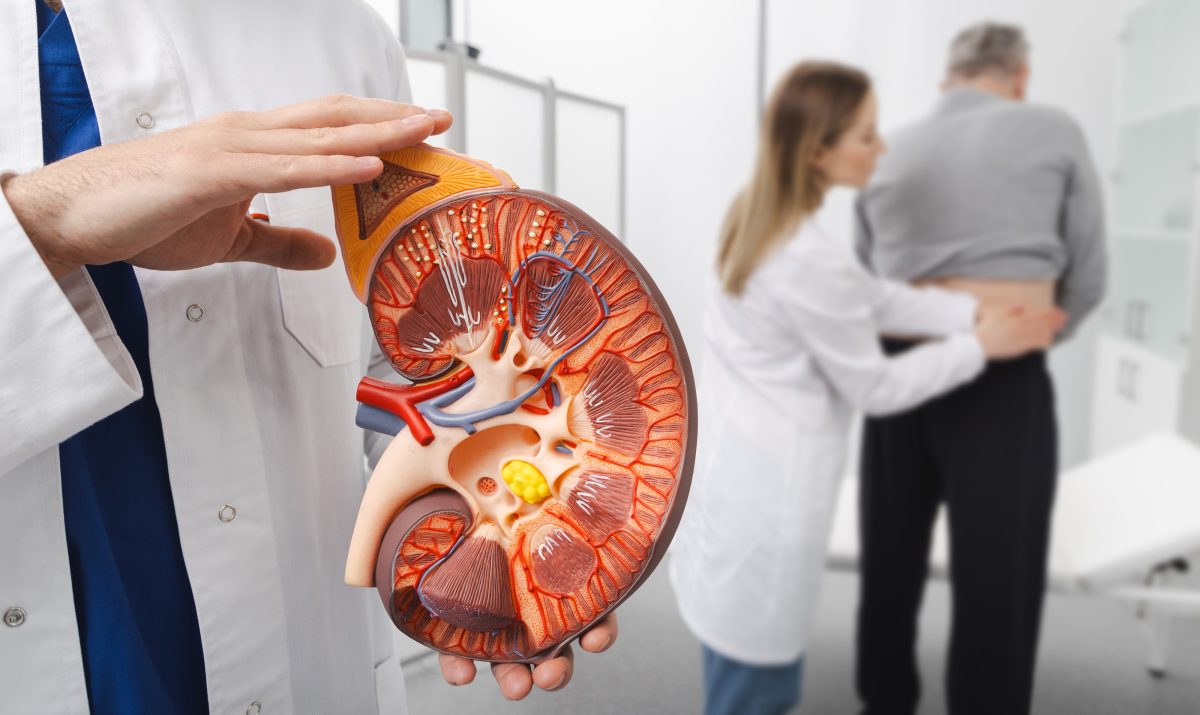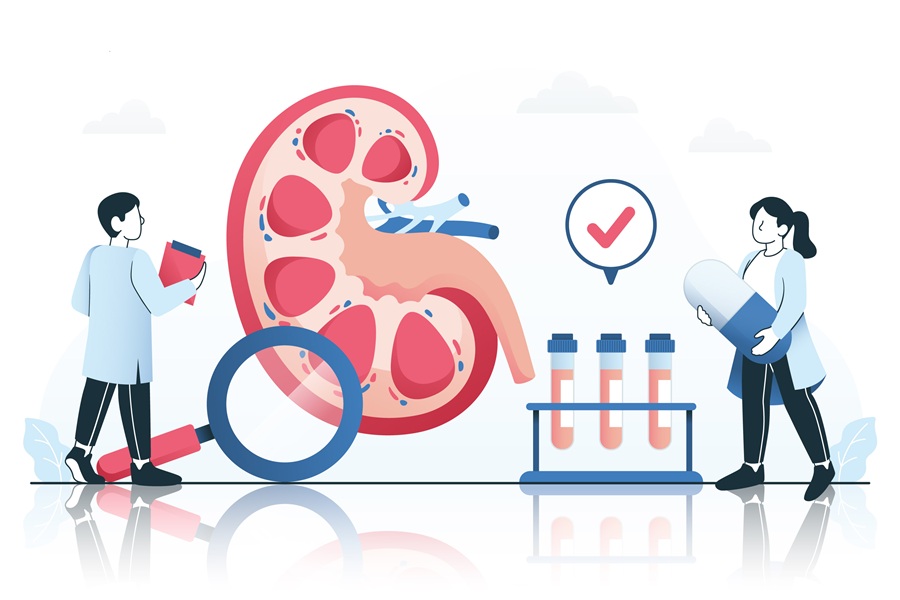
Image credit: Elements Envato
The recent passing of Hong Kong actor Benz Hui from kidney cancer has once again drawn attention to this “silent killer”. Although kidney cancer is the seventh most common cancer in the United States, its incidence in Malaysia remains comparatively low — ranking 14th among men and 20th among women — resulting in limited awareness and fewer targeted resources. Alarmingly, more than half of Malaysian cases are only diagnosed at an advanced stage, leading to poorer outcomes.
Experts recommend that individuals aged 50 and above undergo at least one ultrasound screening each year. While this is the most practical method for early detection, Malaysia continues to face challenges in diagnosing kidney cancer early compared with other, more widely recognised cancers.
Kidney Cancer in Malaysia: A Low-Profile Disease with High Impact
Kidney cancer occurs when abnormal cells in the kidneys grow uncontrollably. Renal cell carcinoma (RCC) is the most common form, accounting for around 90% of adult cases. Less common types include transitional cell carcinoma of the renal pelvis and Wilms' tumour (nephroblastoma), which mainly affects children.
Worldwide, the incidence of kidney cancer continues to rise. In 2020, approximately 179,000 deaths were attributed to the disease, and by 2022 there were an estimated 79,000 new cases and 13,920 deaths.
In Malaysia, the situation differs markedly from Western countries. According to the GLOBOCAN 2020 report, kidney cancer ranks among the nation’s top 20 cancers, with more than 700 new cases and over 400 deaths annually — a mortality rate exceeding 57%.
Dr Lee Boon Cheok, Consultant Urologist at Subang Jaya Medical Centre, notes that kidney cancer is more common in men and its incidence rises significantly after age 50. He suggests this may be linked to higher smoking rates among men and the possible protective effects of female hormones.
Because kidney cancer receives relatively little attention in Malaysia, it also attracts fewer healthcare resources, especially for early screening and public education. As a result, higher-profile cancers such as prostate cancer tend to take precedence in both healthcare priorities and public awareness.

Dr Lee Boon Cheok
Debunking a Common Myth: Does Kidney Disease Lead to Kidney Cancer?
A widespread belief is that chronic kidney disease (CKD) directly causes kidney cancer. Dr Lee clarifies that the relationship is not direct but rather an association.
Major risk factors for kidney cancer include smoking, obesity and high blood pressure. For individuals aged 50 and above, annual ultrasound screening remains the most practical early detection strategy, together with maintaining a healthy and moderate lifestyle.
“End-stage kidney failure is also associated with kidney cancer because it may be linked to cystic kidney disease, which in turn is associated with cancer development.”
Hereditary kidney cancers, however, are extremely rare. Since kidney cancer itself is uncommon, genetically inherited cases are even rarer. Examples include:
- Von Hippel–Lindau (VHL) disease: A rare autosomal dominant disorder leading to haemangioblastomas in the cerebellum, spinal cord, kidneys and retina.
- Birt–Hogg–Dubé syndrome: A rare autosomal dominant condition characterised by diffuse lung cysts, spontaneous pneumothorax, skin tumours and various kidney tumours.
Dr Lee emphasises: “Just like smoking increases cancer risk but does not guarantee cancer, these risk factors raise the likelihood of disease — they do not determine it.”
Key Risk Factors for Kidney Cancer
- Smoking
- High blood pressure
- Obesity
- Long-term dialysis
- Family history
- Genetic conditions
- Occupational exposure to asbestos or cadmium

Image credit: Elements Envato
The Silent Challenge: Early Kidney Cancer Has No Symptoms
One of the biggest challenges with kidney cancer is its lack of early symptoms. According to the Ministry of Health, more than 50% of Malaysian cases are detected only at an advanced stage.
“Early kidney cancer has almost no symptoms — this is the biggest problem,” says Dr Lee.
The kidneys are located deep inside the body, protected by abdominal structures, ribs, the spine and back muscles. This “double barrier” makes early tumours difficult to detect simply by discomfort or physical examination.
“If a tumour is big enough to be felt by hand, it is often already late-stage and may have spread.”
The classic triad of kidney cancer — flank pain, blood in the urine and a palpable mass — sounds straightforward, but Dr Lee cautions that when these symptoms appear together, the disease is already very advanced. Visible blood in the urine often indicates a ruptured blood vessel — uncommon in early cancer.
Many patients discover kidney tumours incidentally during routine health screenings, by which time the tumours are often already significant in size but remain symptom-free.
Signs and Symptoms of Kidney Cancer
- Blood in the urine (pink, red or cola-coloured)
- Loss of appetite, fatigue or persistent low-grade fever
- A lump in the abdomen or flank
- Persistent lower back or flank pain
- Night sweats or anaemia
- Unexplained weight loss
Why Annual Ultrasound Screening Matters
“An annual ultrasound is very important!” stresses Dr Lee. It is an accessible and affordable screening method available across most healthcare settings, making it a practical tool for improving early detection and lowering mortality risk.
Routine screening is typically advised from age 50, but with increasing cancer incidence among younger adults, earlier screening may also be relevant. Dr Lee notes that younger individuals today face more health issues, possibly due to lifestyle factors and stress, and should remain vigilant.

Image credit: Elements Envato
Tumour Size and Stage: What They Mean for Treatment
Advancements in imaging and minimally invasive surgery (MIS) have significantly improved early detection and treatment outcomes. Kidney cancer staging is largely based on tumour size and spread. Small, localised tumours can often be removed while preserving healthy kidney tissue.
When major renal blood vessels or lymph nodes are involved, this usually indicates Stage 3 disease and a poorer prognosis.
Many lesions detected on ultrasound are benign cysts — fluid-filled structures that become more common with age, affecting around half of individuals over 50. However, if a cyst appears solid rather than fluid-filled, there is reason to suspect malignancy.
Small tumours of around 1–2 cm typically grow slowly, whereas larger tumours of 4–5 cm may grow faster and are more likely to spread.
| Stages of Kidney Cancer | |
|---|---|
| Stage 1 | Tumour under 7 cm, confined to the kidney |
| Stage 2 | Tumour over 7 cm, still confined to the kidney |
| Stage 3 | Spread to nearby lymph nodes, renal blood vessels or adrenal gland |
| Stage 4 | Spread to distant organs, such as the lungs, bones or liver |
Treating Kidney Cancer: Surgery Remains the Cornerstone
Surgery continues to be the primary and most effective treatment for kidney cancer. Minimally invasive and robotic-assisted surgeries are becoming increasingly common in Malaysia, particularly in centres such as Kuala Lumpur Hospital and University Malaya Medical Centre.
The type of surgery — whether partial nephrectomy (removing only the tumour) or radical nephrectomy (removing the entire kidney) — depends on tumour size and stage.
Even for advanced kidney cancer, new medications are available, many of which do not require hospital admission. Standard treatments include:
- Targeted therapy: Blocks specific growth signals in cancer cells, helping shrink tumours or reduce their size before surgery. Side effects are generally milder than chemotherapy.
- Immunotherapy: Uses immune checkpoint inhibitors to help the immune system identify and attack cancer cells.
However, Dr Lee notes that these newer treatments often come with increasing medical costs.

Health, Supplements and Genetics: The Importance of Moderation
Prevention remains the best approach. Key lifestyle practices include:
- Maintaining a balanced diet and healthy body weight
- Quitting smoking and reducing alcohol intake
- Managing daily stress effectively
Dr Lee warns that excessive exercise, such as frequent marathons and triathlons, can trigger inflammation and place significant strain on the body. Balance in diet and physical activity is crucial.
Genetic Testing: Useful but Limited
Genetic testing is becoming more accessible, but it is not definitive. Most results indicate risk associations rather than certainties. Knowing one carries a particular gene mutation can also trigger anxiety, stress or sleep disturbances.
Even with well-established genes like BRCA, decisions on preventive measures are based on correlation rather than absolute certainty. Epigenetics shows that lifestyle and behaviour can influence how genes are expressed.
Ultimately, moderation and balance remain the most effective long-term approach to managing health risks.
Early Detection Is Key
Kidney cancer presents a unique challenge in Malaysia — it is relatively uncommon, yet a significant percentage of cases are diagnosed late. Early detection remains the strongest defence. For those at higher risk — smokers, individuals with high blood pressure or obesity, and adults over 50 — annual ultrasound screening is the most practical first step.
With advances in technology, minimally invasive surgery and newer medications offer more treatment options and improved outcomes. However, rising healthcare costs continue to be a concern. On a personal level, avoiding health myths, maintaining a balanced diet and adopting a moderate, sustainable lifestyle remain key to long-term health.
Source: Nan Yang Siang Pau
